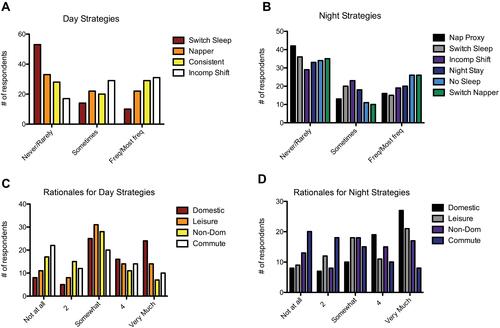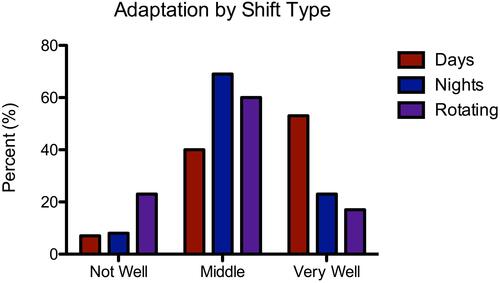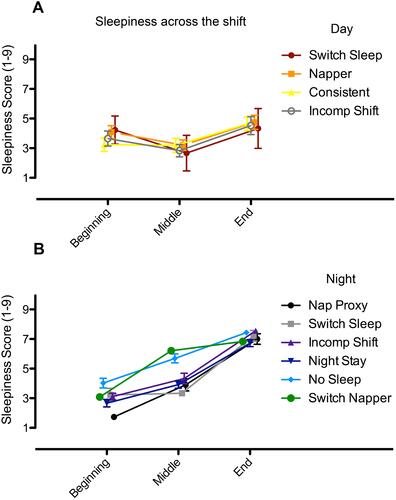Figures & data
Table 1 Demographic Composition and Chronotype
Table 2 Definitions of Sleep-Scheduling Strategies
Figure 1 Frequency of employing specific sleep-scheduling strategies and rationales for strategies by shift type. The frequency of engaging in each sleep-scheduling strategy when working day (A) and night shifts (B). Participants reported frequency for each type on a scale of 1–5, which was binned for chi-square analysis. Incomplete Shifter-D and Consistent were the most frequently used strategies for day shifts, and Switch Napper and No Sleep were for night shifts. Rationales for sleep-strategy selection included domestic, leisure, non-domestic concerns, as well as daily commute. Domestic concerns were the most frequently cited contributor to sleep-strategy selection for both day (C) and night shifts (D). Abbreviations: Incomp Shift, Incomplete Shifter; Non-Dom, Non-Domestic; Freq, Frequently.

Figure 2 Adaptation by shift type. Adaptation for permanent day workers, permanent night workers, and workers who rotated from day to night was reported on a scale from 0 to 10 and binned into three categories as in Petrov et al, 2014: Not well, Middle, and Very well.

Table 3 Strategies and Correlations with Measures of Adaptation
Figure 3 Sleepiness across the shift by primary sleep-scheduling strategy. Retrospectively reported sleepiness scores on a scale of 1–9 across 12 h day (A) and night shifts (B), binned into beginning, middle, and end of shift (mean±SEM). Symbols are offset slightly on the X-axis for ease of viewing. Error bars are present, but in some cases are obscured by symbols.Abbreviations: Incomp Shift, Incomplete Shifter

